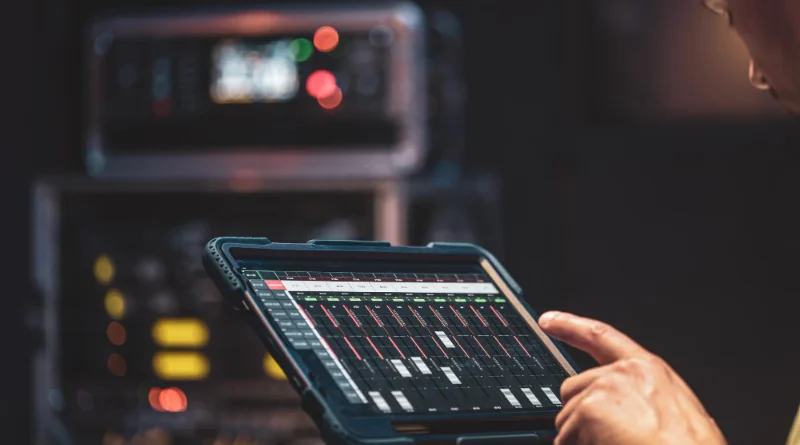How to Improve Water Management Using Advanced Monitoring Sensors
Water is a finite and essential resource that sustains life on Earth. As the global population continues to grow and climate change poses new challenges, the need for efficient water management becomes increasingly urgent. Advanced monitoring sensors are emerging as powerful tools to address this challenge by providing real-time data and insights into water usage, quality, and distribution. In this blog post, we will explore how advanced monitoring sensors can revolutionize water management practices, offering a more sustainable and resilient approach to ensure water security for the future.
The Current State of Water Management: Challenges and Opportunities
Water scarcity, pollution, and inefficient distribution are some of the critical challenges facing water management today. Traditional methods of monitoring and managing water resources often fall short in providing timely and accurate information. Advanced monitoring sensors present a paradigm shift in water management, offering a comprehensive and data-driven approach to address these challenges.
Understanding Advanced Monitoring Sensors
Advanced monitoring sensors utilize cutting-edge technologies such as Internet of Things (IoT), artificial intelligence, and remote sensing to collect, analyze, and transmit data related to water resources. These sensors can be deployed at various points in the water supply chain, including rivers, reservoirs, treatment plants, distribution networks, and even in homes and industries. The data collected by these sensors enable real-time decision-making, optimizing water usage and minimizing wastage.
Real-time Data for Informed Decision-Making
One of the significant advantages of advanced water monitoring sensors is their ability to provide real-time data on water quantity and quality. Traditional monitoring methods often involve periodic sampling and testing, leading to delayed responses to changes in water conditions. With advanced sensors, water managers can access up-to-the-minute information, allowing for quick response to emerging issues such as contamination events, leakages, or unexpected spikes in demand.
Optimizing Water Distribution Networks
Water distribution networks are complex systems with numerous interconnected components. Advanced sensors can be strategically placed throughout these networks to monitor water flow, pressure, and quality. By analyzing this data, water utilities can identify inefficiencies, detect leaks, and optimize the overall performance of the distribution network. This not only conserves water but also reduces operational costs and enhances the resilience of the system.
Ensuring Water Quality and Safety
Water quality is paramount for the health and well-being of communities. Traditional water quality monitoring involves periodic sampling and laboratory analysis, which may not capture sudden changes or localized issues. Advanced monitoring sensors continuously monitor parameters such as pH, turbidity, and contaminants, providing a comprehensive understanding of water quality. This proactive approach enables early detection of potential threats, ensuring the delivery of safe and clean water to consumers.
Smart Irrigation for Agriculture
Agriculture is a major consumer of water, and inefficient irrigation practices contribute to water wastage. Advanced sensors can be integrated into smart irrigation systems that use real-time data on soil moisture, weather conditions, and crop needs to optimize irrigation schedules. By ensuring that crops receive the right amount of water at the right time, these systems conserve water, improve crop yields, and contribute to sustainable agriculture.
Monitoring Groundwater Resources
Groundwater is a critical source of water for many regions, but over-extraction and contamination pose significant threats. Advanced monitoring sensors can be deployed in wells and aquifers to continuously monitor groundwater levels and quality. This data is invaluable for sustainable groundwater management, helping prevent over-pumping, saltwater intrusion, and other issues that can compromise this vital resource.
Community Engagement and Water Conservation
Beyond the technical aspects, advanced monitoring sensors can also empower communities to actively participate in water conservation efforts. By providing real-time information on individual and community water usage, these sensors raise awareness and encourage responsible water consumption. This community engagement fosters a sense of shared responsibility for water resources, contributing to long-term sustainability.
Challenges and Considerations
While advanced monitoring sensors offer tremendous benefits, their implementation comes with challenges. Issues such as data security, privacy concerns, and the cost of deploying and maintaining sensor networks need careful consideration. Additionally, ensuring interoperability and standardization of sensor technologies is crucial to create a seamless and integrated water management system.
The Future of Water Management: Integrating Advanced Technologies
As technology continues to advance, the future of water management holds exciting possibilities. Integrating advanced monitoring sensors with other emerging technologies such as blockchain for secure data management and predictive analytics for forecasting water demand can further enhance the efficiency and resilience of water systems.
Conclusion
In conclusion, advanced water monitoring sensors represent a transformative force in the field of water management. By providing real-time data, optimizing distribution networks, ensuring water quality, and fostering community engagement, these sensors offer a holistic solution to the challenges facing water resources globally. As we move forward, the integration of advanced technologies and the collaboration between governments, industries, and communities will be key to building a sustainable and resilient water future for generations to come.

